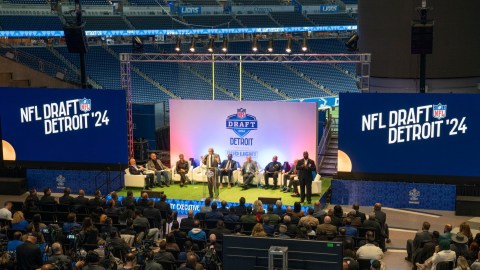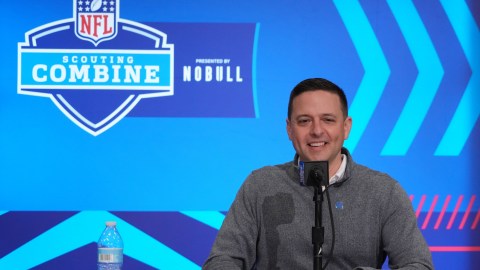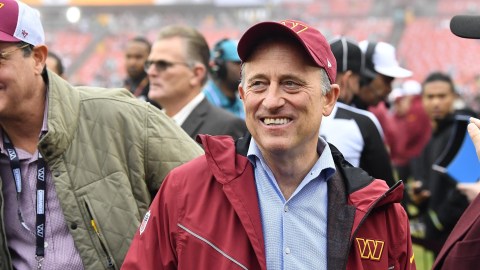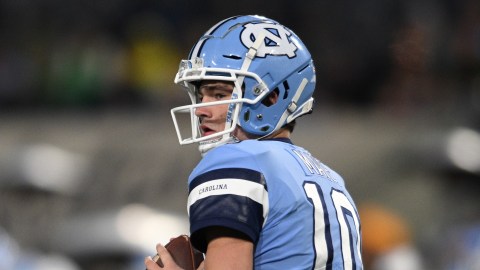Turn on ESPN, flip on sports talk radio or ask just about anyone on the street what they think of the NFL's changes to kickoffs, and pretty much every response is the same.
"This is football! Let 'em play!"
"Why don't you just put skirts on 'em?!"
"What's next? Flag football?!"
Who knew people valued their kickoffs so dearly?
Yet, despite the overwhelming lack of support, despite the rush of caveman-like reactions from the media and despite the obvious fact that kickoffs will become less exciting, the decision to move kickoffs from the 30 to the 35-yard line is the right one.
The reason is less obvious than it seems.
When most people think of kickoffs, they think of two things: the kick and the returner. Watching on TV, that's pretty much your only option. However, where the real damage is done is with the other 20 men on the field. They participate in what can only be described as full-speed chaos.
The coverage unit includes 10 men running full tilt down the field. The return unit has 11 guys standing flat-footed before running full speed at the opposition. One of those men gets tackled; the rest are rarely noticed for anything but illegal blocks in the back.
It's those 10 men, however, who are most at risk on kickoffs. They are the players who may not even be involved much in the outcome of the play, but they are the most likely to make helmet-to-helmet contact at full speed. When a coverage man is coming at you as fast as he can, there's only so much you can do to get in his way. Though you're taught to use your shoulder, it's hard to avoid a head-to-head collision at initial contact.
These types of collisions aren't even the ones that end up on SportsCenter. They're not the James Harrison on Mohamed Massaquoi, the Brandon Meriweather on Todd Heap or the Dunta Robinson on DeSean Jackson. These collisions on kickoffs don't get the attention because they're not as severe, but over time, they take their toll.
Consider this description of the life of an offensive lineman from Kyle Turley.
"I remember, every season, multiple occasions where I'd hit someone so hard that my eyes went cross-eyed, and they wouldn't come uncrossed for a full series of plays," Turley said in Malcolm Gladwell's outstanding New Yorker story from October 2009. "You are just out there, trying to hit the guy in the middle, because there are three of them. You don't remember much. There are the cases where you hit a guy and you'd get into a collision where everything goes off. You're dazed. And there are the others where you are involved in a big, long drive. You start on your own 5-yard line, and drive all the way down the field — 15, 18 plays in a row sometimes. Every play: collision, collision, collision. By the time you get to the other end of the field, you’re seeing spots. You feel like you are going to black out. Literally, these white explosions — boom, boom, boom — lights getting dimmer and brighter, dimmer and brighter."
That's the type of brain damage that goes unnoticed, unreported and largely unknown. It's the type of life that these guys have to experience in order to earn their paycheck.
"That's football," Turley went on to say. "You're told either that you're hurt or that you're injured. There is no middle ground. If you are hurt, you can play. If you are injured, you can't, and the line is whether you can walk and if you can put on a helmet and pads."
Former Patriots linebacker Ted Johnson helps drive the point home.
"Officially," he told The Boston Globe in 2007, "I've probably only been listed as having three or four concussions in my career. But the real number is closer to 30, maybe even more. I've been dinged so many times I've lost count.
"I want people to realize that you don't have to 'black out' to have a concussion," he added. "Most times, the symptoms of a concussion don't show up for hours, sometimes days."
These are just two of the countless stories of NFL players dealing with head trauma. Can the NFL prevent all head injuries? No, of course not, but frankly, any efforts to limit the chances for such injury should be applauded.
Instead, they're being mocked.
The rule change will result in more touchbacks, which is an undeniably more boring outcome. It'll put restrictor plates on X factors like Devin Hester, Josh Cribbs, Leon Washington and whoever the next great return man may be. It will rob us of some game-changing plays, like Desmond Howard's MVP return in Super Bowl XXXI. It'll prevent unlikely heroes like Dan Connolly from emerging on special teams on a nationally televised game. It'll have us watching more of the following sequence: PAT, commercials, kickoff, touchback, commercials. It won't be all that exciting.
Its long-term effects, however, will go a long way toward protecting players' brains. Even though we'll never know the full extent or the exact data of how significant that protection goes, we know it will help. Given all the advances in the research of head trauma in recent years, that should be enough to support the change.



